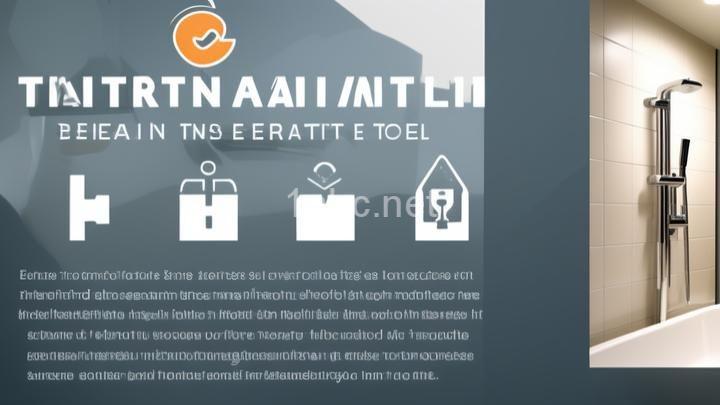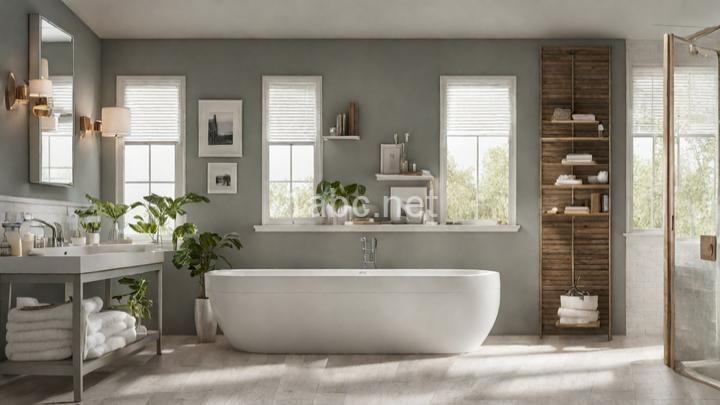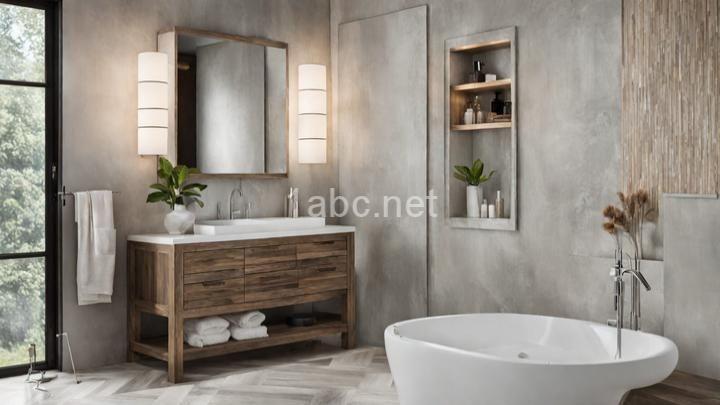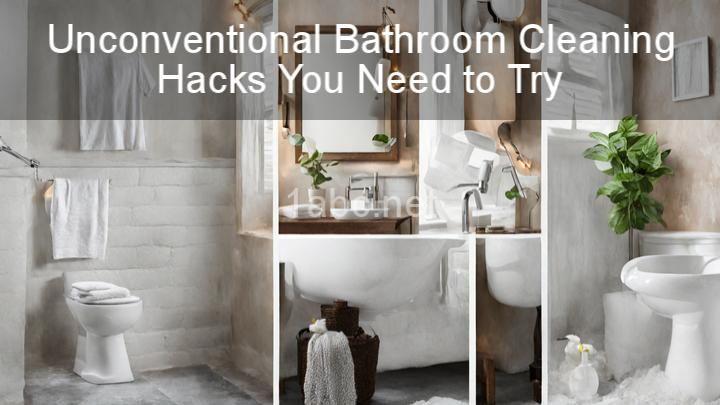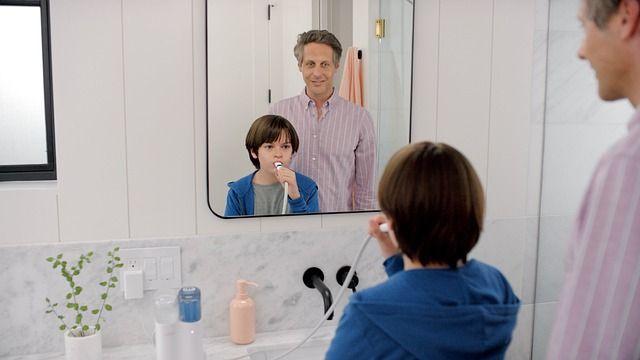Sustainable Style: Incorporating Eco-Friendly Elements in Modern Bathroom Design
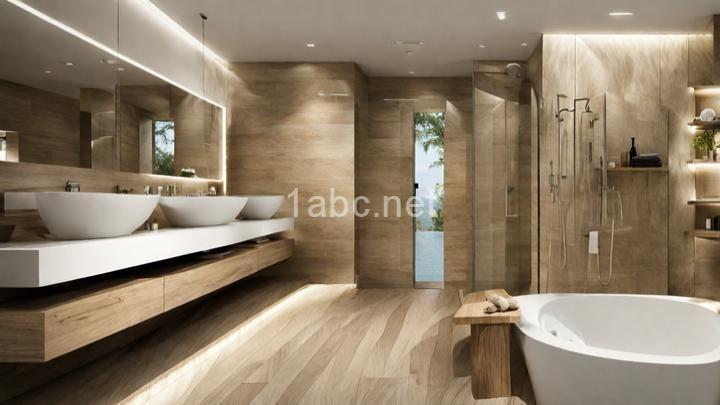
Introduction:
Welcome to our blog post on sustainable style in modern bathroom design. In today's world, where environmental consciousness is becoming increasingly important, it's crucial to consider eco-friendly elements when designing your bathroom. By incorporating sustainable practices into your bathroom design, you not only contribute to a greener and healthier future but also create a space that is both aesthetically pleasing and environmentally conscious. So, let's dive in and explore the world of sustainable style in modern bathroom design.
I. Understanding Sustainable Style
When we talk about sustainable style, we're referring to a design approach that goes beyond aesthetics. Sustainable style emphasizes the use of eco-friendly materials, energy-efficient solutions, and responsible waste management practices. It's about creating a space that not only looks good but also minimizes its impact on the environment. By considering sustainable design principles, you can create a bathroom that is both stylish and environmentally conscious.
II. Choosing Eco-Friendly Materials
A. Flooring Options
When it comes to flooring options, there are several eco-friendly choices to consider. One popular option is bamboo flooring. Bamboo is a sustainable material that grows quickly and can be harvested without causing damage to the environment. It is also extremely durable and can withstand the moisture and humidity often found in bathrooms. Additionally, bamboo flooring offers a unique and stylish aesthetic that can elevate the overall design of your bathroom.
Another environmentally friendly flooring option is recycled tile flooring. Using recycled materials not only reduces waste but also allows for unique and creative designs. Recycled tiles come in a variety of colors and patterns, ensuring that your bathroom flooring is both eco-friendly and visually appealing.
B. Low VOC Paints
Volatile Organic Compounds (VOCs) are chemicals present in many traditional paints that can be harmful to human health and the environment. When selecting paint for your bathroom, opt for low VOC options. These paints are formulated to have minimal VOC content, making them safer for you and your family. Many brands now offer low VOC paint options, so you don't have to compromise on color selection or quality.
C. Water-Efficient Fixtures
Water conservation is a critical aspect of sustainable bathroom design. By choosing water-efficient fixtures, you can significantly reduce water consumption without compromising performance. Low-flow toilets, for example, are designed to use less water per flush while still effectively removing waste. Water-efficient faucets and showerheads are also available, which help reduce water usage by aerating or limiting the flow rate without sacrificing water pressure.
III. Energy-Efficient Lighting Solutions
Lighting plays a vital role in any bathroom design, and when it comes to sustainability, LED lighting is the way to go. LED lights are not only energy-efficient but also have a longer lifespan compared to traditional lighting fixtures. They consume less electricity, resulting in reduced energy bills and a smaller carbon footprint. LED lights are available in various styles, allowing you to choose the perfect lighting solution for your bathroom design.
IV. Green Storage Solutions
A. Sustainable Cabinets
When selecting cabinets for your bathroom, consider sustainable options such as those made from reclaimed wood or materials certified by the Forest Stewardship Council (FSC). Reclaimed wood is sourced from salvaged materials, reducing the need for new resources. FSC-certified materials ensure that the wood used in your cabinets comes from responsibly managed forests, supporting sustainable forestry practices.
B. Recycled Accessories and Décor
In addition to choosing eco-friendly materials for your cabinets, consider incorporating recycled accessories and décor into your bathroom design. Upcycled storage containers, for example, can be created from everyday items such as mason jars or vintage tins. These creative storage solutions not only reduce waste but also add a unique and personal touch to your bathroom. When selecting bath mats and towels, opt for organic cotton or bamboo options, which are not only sustainable but also soft and luxurious.
V. Incorporating Plants into Bathroom Design
Indoor plants are not only aesthetically pleasing but also have numerous health benefits. They purify the air by removing toxins and releasing oxygen, creating a fresh and vibrant atmosphere in your bathroom. When selecting plants for your bathroom, choose low-maintenance options that thrive in high humidity and low light conditions. Some popular choices include spider plants, pothos, and snake plants. These green companions will not only enhance the overall design of your bathroom but also contribute to a healthier environment.
VI. Proper Waste Management
Proper waste management is essential in any sustainable design. In the bathroom, recycling bins can be placed conveniently to encourage the separation of recyclable materials such as plastic bottles and cardboard packaging. Composting systems can also be implemented to reduce organic waste. By consciously buying products with minimal packaging and opting for environmentally friendly alternatives, you can significantly reduce the amount of waste generated in your bathroom.
Conclusion:
Incorporating eco-friendly elements into modern bathroom design is not only a responsible choice but also a creative opportunity to express your personal style. By choosing sustainable materials, energy-efficient solutions, and responsible waste management practices, you can create a bathroom that not only looks beautiful but also contributes to a greener future. So, let's embark on this journey together, and create bathrooms that are both stylish and environmentally conscious. Thank you for joining us, and we hope you feel inspired and empowered to make eco-friendly choices in your bathroom design. Together, we can make a difference!
FREQUENTLY ASKED QUESTIONS
Why should I consider incorporating eco-friendly elements in my bathroom design?
Incorporating eco-friendly elements in your bathroom design not only benefits the environment but also offers several advantages for you as well. Here are a few reasons why you should consider going green in your bathroom:
-
Environmental Responsibility: By choosing eco-friendly materials and practices, you contribute to the conservation of our planet's resources and reduce your carbon footprint. This helps in preserving natural habitats, reducing pollution, and combating climate change.
-
Cost Savings: Eco-friendly bathroom fixtures and appliances, such as low-flow toilets and water-saving showerheads, can significantly reduce your water consumption. This translates into lower water bills and long-term cost savings. Additionally, energy-efficient lighting and ventilation systems can help reduce your electricity bills.
-
Health and Well-being: Many traditional bathroom products contain harmful chemicals that can be detrimental to your health. Eco-friendly alternatives, on the other hand, are made from natural and non-toxic materials, ensuring a healthier indoor environment for you and your family.
-
Durability and Longevity: Eco-friendly bathroom materials are often more durable and long-lasting, reducing the need for frequent replacements. This not only saves you money but also reduces waste and landfill contributions.
-
Aesthetically Pleasing: Eco-friendly bathroom design doesn't mean compromising on style or aesthetics. With a wide range of eco-friendly products available in the market, you can create a beautiful and sustainable bathroom that reflects your personal taste.
Remember, small changes can make a big difference. By incorporating eco-friendly elements in your bathroom design, you contribute to a greener future while enjoying the benefits of a more sustainable and cost-effective space.
What are some eco-friendly materials I can use in my bathroom design?
When it comes to creating an eco-friendly bathroom design, there are several materials you can consider that are both sustainable and environmentally friendly. Here are some options to incorporate into your bathroom:
-
Bamboo: Bamboo is a popular choice for bathroom materials due to its fast growth rate and renewability. It can be used for flooring, countertops, and even bathroom accessories like toothbrush holders and soap dishes.
-
Recycled Glass: Utilizing recycled glass for bathroom countertops and tiles not only adds a unique and stylish touch to your design but also helps reduce waste. Recycled glass can be sourced from old bottles and windows, making it a sustainable choice.
-
Salvaged Wood: Using salvaged or reclaimed wood for bathroom vanities or shelving adds a rustic and eco-friendly element to your design. By repurposing wood from old barns, furniture, or shipping pallets, you're giving new life to materials that would otherwise go to waste.
-
Low VOC Paint: Volatile Organic Compounds (VOCs) are chemicals commonly found in conventional paint that can release harmful gases into the air. Opting for low VOC or VOC-free paint in your bathroom not only reduces indoor air pollution but also promotes better air quality.
-
Natural Stone: While natural stone may not be the most sustainable option, choosing locally sourced and responsibly quarried stone can minimize environmental impact. Look for stone options like limestone or slate that have a smaller carbon footprint compared to imported materials.
-
Water-Saving Fixtures: In addition to material choices, incorporating water-saving fixtures is crucial for an eco-friendly bathroom. Install low-flow showerheads, faucets, and toilets to conserve water without sacrificing performance.
Remember, creating an eco-friendly bathroom design is a step towards sustainable living. By choosing materials that are recyclable, renewable, or repurposed, you can reduce your environmental footprint and contribute to a greener future.
How can I conserve water in my bathroom design?
Conserving water in your bathroom design is an excellent way to reduce your environmental impact and save on your water bills. Here are some tips to help you achieve water efficiency in your bathroom:
-
Install low-flow fixtures: Replace your old showerhead, faucets, and toilet with low-flow alternatives. These fixtures are designed to use less water without compromising performance. For example, a low-flow showerhead can save up to 2.5 gallons of water per minute compared to a standard showerhead.
-
Opt for dual flush toilets: Dual flush toilets offer two flush options, typically a full flush for solid waste and a reduced flush for liquid waste. This allows you to choose the appropriate amount of water for each flush, reducing water usage significantly.
-
Fix leaks promptly: Leaky faucets, toilets, and pipes can waste a significant amount of water over time. Regularly check for any leaks and repair them promptly to prevent water wastage.
-
Take shorter showers: Limiting your shower time can make a big difference in water conservation. Consider using a shower timer or setting a personal goal to reduce your shower time. Additionally, turning off the water while lathering or shampooing can save gallons of water.
-
Collect and reuse water: Place a bucket in the shower to collect excess water while you wait for it to warm up. This "greywater" can be used to water plants or flush toilets, reducing the need for fresh water.
-
Use water-saving accessories: Consider using aerators on your faucets to reduce water flow without sacrificing pressure. These simple attachments mix air with water, reducing the amount of water used without compromising functionality.
-
Educate your family: Teach everyone in your household about the importance of water conservation and encourage them to adopt water-saving habits. Simple actions like turning off the faucet while brushing teeth or only running the washing machine and dishwasher with full loads can make a significant impact.
By implementing these water-saving strategies in your bathroom design, you can contribute to a more sustainable future while enjoying the benefits of reduced water consumption and lower utility bills.
Are there eco-friendly alternatives to traditional bathroom cleaning products?
Yes, there are indeed eco-friendly alternatives to traditional bathroom cleaning products. Many people are becoming more conscious of the impact that traditional cleaning products can have on the environment, as they often contain harsh chemicals that can be harmful to both human health and the planet.One eco-friendly option is to use natural cleaning ingredients such as vinegar, baking soda, and lemon juice. These ingredients are effective at removing dirt, grime, and stains, while also being gentle on surfaces and safe for the environment. For example, vinegar can be used to clean mirrors and windows, while a paste made from baking soda and water can be used to scrub away tough stains in the bathroom.
Another option is to choose cleaning products that are specifically labeled as eco-friendly or green. These products are typically made with plant-based ingredients and are free from harsh chemicals. They are designed to be biodegradable and have minimal impact on the environment. Look for certifications such as the Environmental Protection Agency's Safer Choice label or third-party certifications like Green Seal or EcoLogo.
Additionally, microfiber cloths and reusable cleaning tools are another eco-friendly alternative. These products can be used with just water or a small amount of natural cleaning solution, minimizing the need for disposable wipes or paper towels.
By opting for these eco-friendly alternatives, you can maintain a clean and fresh bathroom while reducing your impact on the environment. It's a win-win situation for both you and the planet!
